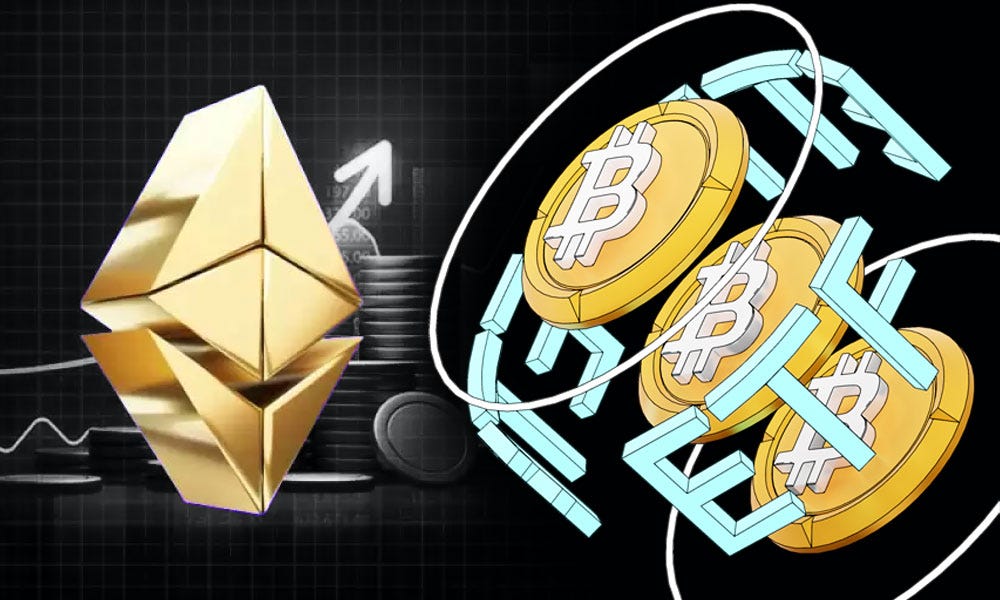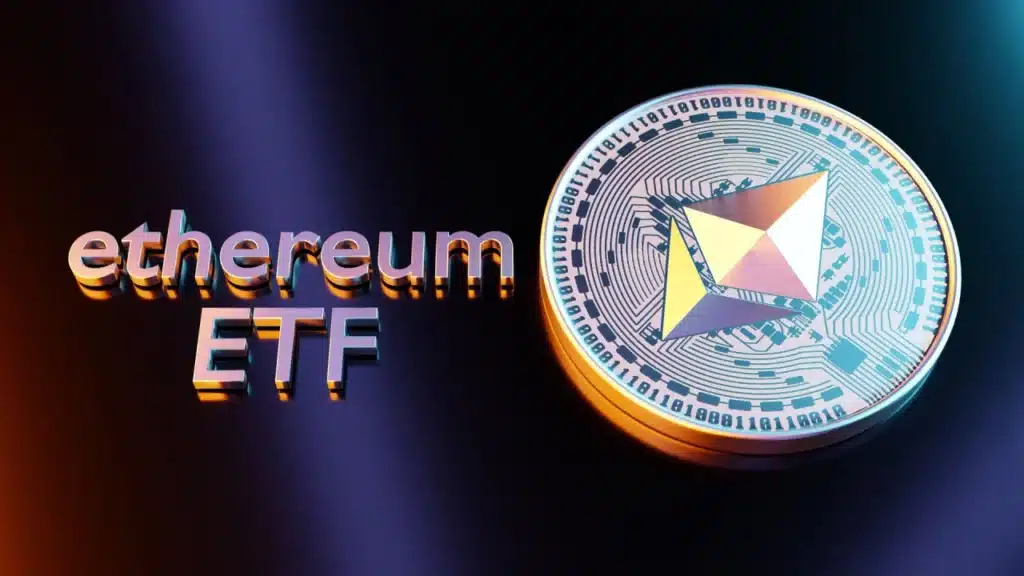Don’t invest unless you’re prepared to lose all the money you invest. This is a high-risk investment and you are unlikely to be protected if something goes wrong. Take 2 minutes to learn more
Overview
A major step toward the widespread acceptance of digital assets has been heralded with the establishment of a spot Bitcoin ETF in the United States. Spot Ether ETFs are expected to be approved, but this is causing some people to scoff because, unlike their European counterparts, these ETFs do not provide investors with rewards for staking. This absence highlights a larger problem: regulators and traditional financial asset managers may not have understood the unique characteristics that set Ether (ETH) apart from Bitcoin (BTC).
The Fundamental Differences: BTC vs. ETH
Despite being two of the most popular cryptocurrencies, Ether and Bitcoin have quite diverse uses within the blockchain network. Because it relies on miners to protect the network through proof-of-work (PoW) consensus, Bitcoin is primarily seen as a digital store of value. Because of its limited supply and accelerating rate of issuance, Bitcoin is becoming more and more popular as a deflationary asset.
Ether, on the other hand, is more than simply money. It drives the Ethereum blockchain, a decentralized platform that facilitates the use of non-fungible tokens (NFTs), smart contracts, and decentralized financing (DeFi). The proof-of-stake (PoS) architecture used by the Ethereum network entails staking, or locking up ETH in return for rewards in order to contribute to network security. Some contend that a spot ETH ETF without staking falls short of utilizing Ethereum’s full potential as an investment and as a technology because of this fundamental difference in operation.
The Ethereum network depends on staking, particularly after it switches to Ethereum 2.0 in September 2020. Currently, over 32 million ETH, or 27% of the entire supply, are staked, highlighting ETH’s crucial role in network governance and security. It’s possible that these financial products miss the mark on Ethereum’s value proposition because they don’t include staking in their spot ETH ETF.
Staking rewards, which often vary from 1% to 4% annually, provide investors with extra earnings. Staking appeals to investors because it offers the possibility of additional revenue, particularly in a volatile market. Investors seeking both income and capital appreciation may not be drawn to a spot ETH ETF without staking.
Regulatory and Structural Challenges
The regulatory landscape is one of the main barriers to including staking in a U.S.-based spot Ethereum ETF. The Securities and Exchange Commission (SEC) of the United States has been reluctant to permit staking in the conventional spot ETF frameworks. The inclusion of staking is complicated by the form of a spot ETF, which is usually a 1933 Act grantor trust, as authorities may view staking as a securities activity. Before staking is included into an ETF structure, there are a number of important issues that need to be resolved, including this regulatory ambiguity and worries regarding the security and custody of staked assets.
Furthermore, it’s important to specify the tax ramifications of staking rewards. These benefits are regarded as taxable income in many jurisdictions, which may make tax reporting more difficult for investors in exchange-traded funds. To allay these worries and speed up the adoption of ETFs with staking capabilities, regulatory organizations must provide clear guidelines.
In Conclusion
The advent of spot Ether ETFs is definitely a good thing, however these products might not reach their full potential if staking isn’t included. Investors that engage in staking not only receive higher returns, but their interests are also in line with the safety and stability of the Ethereum network. A spot ETH ETF might find it difficult to compete with current crypto-native alternatives that already provide network involvement and staking without this capability. Financial instruments must accurately reflect the distinctive qualities of the assets they represent as the digital asset market develops in order to guarantee that investors can take advantage of all the opportunities afforded by cryptocurrencies such as Ethereum.
Make money without lifting your fingers: Start using a world-class auto trading solution
- Broker
- Min Deposit
- Score
- Visit Broker
- Award-winning Cryptocurrency trading platform
- $100 minimum deposit,
- FCA & Cysec regulated
- 20% welcome bonus of upto $10,000
- Minimum deposit $100
- Verify your account before the bonus is credited
- Fund Moneta Markets account with a minimum of $250
- Opt in using the form to claim your 50% deposit bonus
Learn to Trade
Never Miss A Trade Again

Signal Notification
Real-time signal notifications whenever a signal is opened, closes or Updated

Get Alerts
Immediate alerts to your email and mobile phone.

Entry Price Levels
Entry price level for every signal Just choose one of our Top Brokers in the list above to get all this free.





